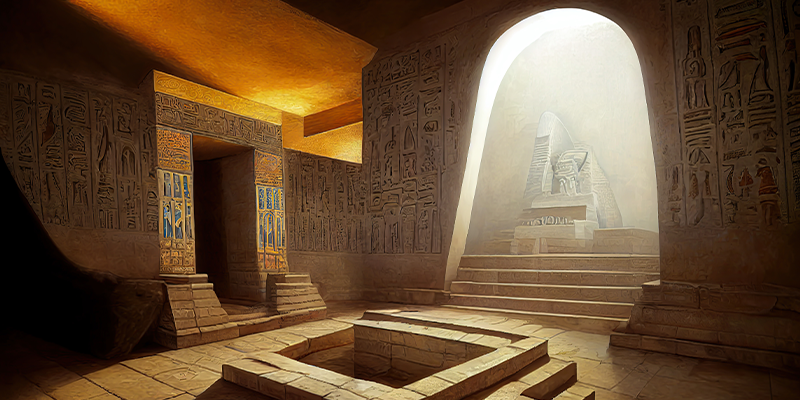The discovery of hidden hieroglyphics within Tutankhamun’s tomb lends weight to a theory that the fabled Egyptian queen Nefertiti lies in a hidden chamber adjacent to her stepson’s burial chamber, a world-renowned British Egyptologist has said.

Nicholas Reeves, a former curator in the British Museum’s Department of Egyptian Antiquities, said that while the theory remained unproven after inconclusive radar scans, it has been given fresh impetus following the new clue.
Reeves realised that cartouches depicting Tutankhamun being buried by his pharaonic successor, Ay, had been painted over cartouches of Tutankhamun burying Nefertiti, the legendary beauty, queen of Egypt and wife of King Akhenaten.

Reeves told the Guardian: “I can now show that, under the cartouches of Ay, are cartouches of Tutankhamun himself, proving that that scene originally showed Tutankhamun burying his predecessor, Nefertiti. You would not have had that decoration in the tomb of Tutankhamun.”
On the decorated north wall, the later cartouches show Ay holding a ceremonial adze and performing the ritual of “opening the mouth” of the mummy, to restore the deceased’s five senses.

Reeves said: “Close inspection of Ay’s cartouches reveals clear, underlying traces of an earlier name – that of Tutankhamun. In its original version, this scene had shown Tutankhamun performing the funerary ritual for the tomb’s original owner, his immediate predecessor … Nefertiti.”

He added: “This conclusion finds absolute confirmation in the figures’ facial profiles – the snub nose and chubby under-chin of the [figure] currently labelled as Ay follow … precisely the standardised facial outline adopted for official representations of Tutankhamun at the very start of his kingship. The face of the mummy carries the indisputable features of Nefertiti. Demonstrably, the scene had begun its life as a record of Tutankhamun officiating at the burial of his predecessor.”

Discovered exactly a century ago by Howard Carter, Tutankhamun’s tomb was filled with chairs and chariots, among dazzling treasures the boy king would need in the afterlife.

Inside view of Tutankhamun’s burial chamber. Drawings on its walls have been shown to have been altered. Photograph: Hanaa Habib/EPA
Reeves argues that his unexpected death – in 1324BC aged 19, after only nine years on the throne – meant that he needed to be buried hurriedly: “Not until a decade later, with Tutankhamun’s death, would the tomb be reopened and its outermost elements emptied and adapted to receive its cuckoo prince.”

He said that the new evidence supports the theory that Tutankhamun’s tomb is merely the outer section of a much larger tomb “prepared for and still occupied by” Nefertiti, whose own, independent sequence of funerary chambers lie beyond what can be seen currently.
In 2015, Reeves argued that high-resolution images of Tutankhamun’s tomb showed lines underneath plastered surfaces of painted walls, suggesting unexplored doorways, although other experts felt that the scans were inconclusive.

He said: “It’s very easy just to write this off as sheer fantasy, but … I’ve discovered that the decoration of the wall in the burial chamber had been changed.
“We’ve always been puzzled by Tutankhamun’s tomb because of its strange shape. It’s very small, and not what we’d expect of a king.”
Reeves’s curatorial positions also include the Metropolitan Museum of Art in New York. He has worked extensively as an archaeologist both in and around the tomb of Tutankhamun.

The bust of Nefertiti is part of the Egyptian Museum and Papyrus Collection, currently on display at the Neues Museum in Berlin, Germany. Photograph: Fabrizio Bensch/Reuters
He singles out, for example, Tanis, where the 21st Dynasty burials of Psusennes I and Amenemope were discovered, intact and forgotten, behind an equivalent decorated, sliding stone partition.